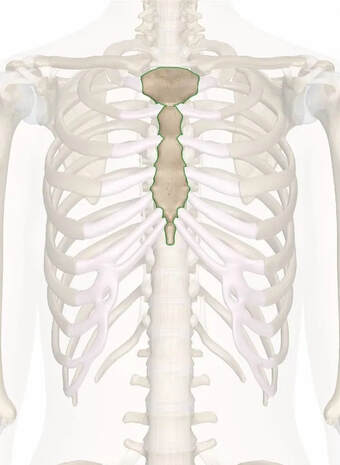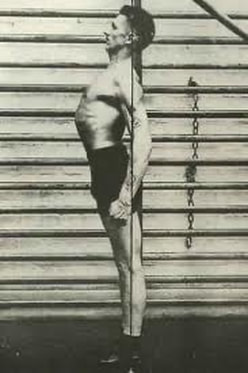|
There is a “way in” to every person. As an Alexander Technique teacher, I understand this phrase intimately. People often walk into my studio for the first time feeling tense, nervous about being there, simultaneously resisting and wanting change. Each situation, each person, requires a different touch to be able to let go. Some people respond best to a light hand on the back of their neck. Others, to subtle touch on their hips. And others, to a hand placed gently on their breastbone, index finger and thumb resting on their collarbone. The latter of those is my favorite way in, and the one I probably have the most success with. |
You can try it yourself – you don’t need an AT teacher to show you. Take one of your hands and place it lightly on your sternum. Let your index finger and thumb open away from each other in a comfortable manner, so that you feel each of those digits resting easily on either side of your collarbone. Now, take in and slowly release a breath. How do you feel? What do you notice?
|
|
So many people walk into my studio trying to “stand up straight.” In the process, they push their breastbone up and out to get their shoulders to go back. Most of us would think of a soldier at attention to visualize what this posture looks like at its most extreme. (see photo) I see some variation of this often in people who practice a lot of yoga. My yoga people tell me it’s wrong for them to release there, because the sternum is “supposed to be up,” and yet they feel so much better when they stop pushing to hold it. The trick is to help students find the place that is still standing tall and open without the effort. A hand resting on the breastbone releases any holding they didn’t know they were doing in the first place. It’s seldom something that can be resisted. |
How does this magic happen? Through neuroscience, we now know that a hand on the sternum is accessing the Vegas nerve. The Vegas nerve has been all over the news for the last decade or so. Alexander Teachers all smiled to themselves and said simply, “Of course.” The Vegas nerve connects, among other things, the brain to the heart. A hand on the breastbone is a quiet reminder to let go, to reduce thinking, to simply be. It awakens something in us that is both calming and freeing.
I’ve come to learn that each of the “ways in” that I mentioned in the beginning are accessing various nerves through touch. It’s the thinking and releasing in their own bodies that AT teachers do that allows the release in their students. One nervous system communicating silently with another.
It’s not magic, even if it feels like it is.
As Marjorie Barstow said, “It’s a little bit of nothing.”
I’ve come to learn that each of the “ways in” that I mentioned in the beginning are accessing various nerves through touch. It’s the thinking and releasing in their own bodies that AT teachers do that allows the release in their students. One nervous system communicating silently with another.
It’s not magic, even if it feels like it is.
As Marjorie Barstow said, “It’s a little bit of nothing.”
People who appear to be resisting change may simply be the victim of bad habits. Habit, like gravity, never takes a day off.”
― Paul Gibbons, The Science of Successful Organizational Change: How Leaders Set Strategy, Change Behavior, and Create an Agile Culture


 RSS Feed
RSS Feed